Winter Hiking For Beginners: Tips & Tricks For Hiking in the Snow

Many think hiking is only for fair weather but I wholeheartedly disagree. As someone who is determined to show others how amazing the great outdoors is in the winter months, hiking is the easiest way to do this. Don’t get me wrong, hitting the trails in the ice and snow can be intimidating. Don’t worry though, you’ll be out exploring in no time after reading this guide to winter hiking for beginners. We’ll cover everything from what to wear to what to pack to winter hiking tips!
Disclaimer: This post may contain affiliate links where I may receive a kickback at no extra cost to you. It helps keep IBB alive so thank you!
TABLE OF CONTENTS
Why Go Hiking in the Snow
Let’s be honest, if you’re not an avid fan of winter, this is probably your first thought. There are a number of reasons why getting outside in the winter is a fabulous idea! Here are a few for you.
Fewer People on the Trails
While some trails will always be popular no matter what season it is, the majority of the time you’ll find that there are fewer crowds in the winter months. Many people are either ill-prepared for a winter hike or don’t want to brave the temperatures, but that’s not you! If you like to enjoy the trails when they’re quiet, then you’ll love cold weather hiking.
No Bugs
That’s right, folks. All those pesky flying and crawling critters are gone thanks to the dropping temperatures. No need to load on bug spray or testing your speed trying to outrun mosquitoes, blackflies, horseflies and all those other terrible bugs. You also don’t have to worry as much about ticks as they become inactive once temperatures drop below 5C (41F), though they can be active if temperatures pop above that or find a host before the cold sets in.
Fight the Winter Blues
Are you one of the 760,000 Canadians who struggle with Seasonal Affective Disorder (SAD)? Canadians and those like us who further from the equator are more likely to suffer from it. The longer nights can cause our brains to create more melatonin than normal, so much that it creates depression-like symptoms. One of the best ways to combat this is to get outside on those brilliantly sunny winter days – and hiking is the perfect way to do that!
It’s Good For You
With shorter days and longer nights, it’s important to get outside for some exercise. Not only does hiking outside help beat SAD as mentioned above, but it’s been scientifically proven that increased exposure to nature reduces the risk of cardiovascular disease, type II diabetes, high blood pressure and stress. I’d say those are four great reasons alone to get outside for some winter hiking, not to mention it helps you stay fit!
What to Wear on a Winter Hike
Of course, before you get out on the trails in the cold temperatures, you need to be prepared! Having the proper hiking gear is important, especially in the winter months. If you’re wondering what to wear when hiking in winter, I’ve got you covered. And no, you don’t have to go out and buy a whole new wardrobe of winter hiking clothes!
If you want the full lowdown on what winter hiking gear you’ll need to tackle the trails, check out this guide!
Layering Your Clothing
One of my biggest tips for surviving winter (and Canada in general, really) is to dress in layers. This really helps if the temperature fluctuates throughout the day or if you find yourself warmer than you thought you’d be. Typically, we’re looking at a base layer to keep you insulated and dry, a middle layer for warmth and an outer layer to keep the cold winds out and you dry in the wet snow.
Personally, I find it’s most important to have a solid base layer and a versatile outer layer. If you don’t own some sort of thermal underwear or long johns, I recommend purchasing some. I like mine from Mountain Warehouse as they’re comfortable and also not too expensive. You might be apprehensive about buying layers like this specifically for hiking but they honestly come in handy throughout the winter. If you plan on spending any time outside at all for an event or exploring a new city, you’ll love having this extra layer to keep you warm. You can find a variety of base layers at Atmosphere, Mountain Warehouse and other outdoors stores.
Chances are you have a comfy hoodie laying around so this will be a perfect option for a middle layer. The goal of a middle layer is to help generate heat so that you stay nice and toasty while you’re out and about. You want to be comfy when you’re out hiking and since you’re in layers, nobody is going to see how cute your outfit is. Focus on warmth and grab that comfortable sweatshirt even if the style is way out of season. I tend to opt for a comfortable hoodie like one from my tentree collection as I find anything heavier can cause me to overheat and sweat too much.
As for your pants, this is where I tend to get some funny looks. I absolutely love hiking in tights and they are my preferred option for bottoms. That being said, I typically have fleece-lined options that keep me warm and cozy. However, this is not everyone’s forte. In all honesty, a middle layer for your legs may not be needed when winter hiking – it really depends on the temperature.
Last but not least, your outer later. The goal of your outer layer is to break the wind and keep you dry. For your top, you can go one of two ways for this: opt for a shell layer focused on windbreaking or a ski style winter jacket. Personally, I go for the latter as I prefer to err on the side of being too warm rather than being too cold. It’s easy to unzip and cool down but it’s hard to warm up without enough layers to help you fight the negative temperatures! As for your bottoms, you can either go with a slush pant style shell or go full hog and throw on some snow pants. If you think you’ll find yourself facing deep snow or rolling around in it (don’t give me that look, we both know your inner child still loves snow angels), I’d throw on the snowpants.
Whatever you choose for your layer combination will depend on a number of factors. If you tend to run warm, you might want to do a very light middle layer or choose a heavier one and then opt for a light outer shell. It also will depend on the weather outside as you won’t need as intense gear for -5C compared to -30C. Getting the right combination of layers will take some trial and error but you’ll figure out a combo that’s most comfortable for you!
Winter Hiking Boots & Socks
Proper footwear is so important for any time of the year, but especially in the winter. Your feet need to be warm and dry. Otherwise you could run into some problems – and be miserable. We all hate a soaker when it’s hot out, let alone when it’s freezing!
If you’re wondering what the best winter hiking boots are, it honestly depends on preference. Some folks like to go with a short boot style and wear gaiters or snow pants. Others wear taller styles that a bit more fashionable. There are times too when I wear my Mukluks for premium warmth and comfort. It really depends on your hiking style, how difficult the trail is you’re tackling and how long you plan on being outdoors.
That being said, I personally love hiking in my Sorel winter boots and can highly recommend them. My feet are always warm and toasty and they come in a variety of styles. I’d recommend something higher to help keep the snow out of your boot like their Joan of Arctic style which is similar to what I hike in. If you prefer a lower cut though, they have many different styles – just make sure they’re waterproof!
Since this is a winter hiking for beginners guide, I recommend something like a Sorel boot as it’s a great all-around winter boot. Whether you’re making a grocery run in the snow, walking around the neighbourhood or going tobogganing with the kids, these are a great option. However, they can be expensive. If Sorels are a bit out of your price range, I love the gear from Mountain Warehouse too. They have great quality gear at affordable prices.
Obviously, what we put on our feet inside our winter boots is just as important as the winter boots themselves! Don’t skimp and go for a pair of fuzzy, warm socks. My go-to styles are alpaca and Merino wool. My alpaca socks were definitely more on the expensive side but I didn’t mind as I bought them from a local alpaca farm here in Ontario. Merino wool socks are easier to come by and can be found at most outdoors stores like Atmosphere and Mountain Warehouse.
Hats, Scarves & Mittens
Last but not least, we can’t forget about the extremities! Exposed skin on our face as well as our ears, fingers and toes are vulnerable to frostbite so it’s important to keep them protected.
Let’s start from the top with the head. While the myth that we lose the majority of our body heat from our head has been debunked, it’s still important to keep it covered. A knitted toque or a headband are great options as what we want to really focus on is keeping our ears warm and protected.
You’ll also want to keep your neck warm while preventing the cold winter air from getting down into your jacket. Scarves are perfect for this though I very much enjoy the scarf/Buff combo. If you don’t know what a Buff is, it’s a piece of outdoor gear that’s shaped like a tube. Also referred to as a neck gaiter, it’s a versatile piece of outdoor gear that can be worn in a number of ways. In the winter, a Buff is perfect to quickly put over your face if you find your cheeks or chin getting too cold. While they do absorb a fair amount of moisture, they dry quickly making them very versatile.
Of course, we can’t forget our hands! Mittens are warmer than gloves as more heat is generated when your fingers are not separated by fabric. I almost exclusively wear mittens for this reason. Plus, it’s not like you’re trying to text or something, you’re supposed to be disconnecting when out for a hike… right?
What to Pack For a Winter Day Hike
Now that we have the what to wear for winter hiking, you might be wondering what you should bring day hiking in the winter. It’s honestly not much different than what you would bring along for a day hike in the warmer months, there are just a few extra items I’d recommend on top of the clothing and gear I mentioned earlier.
Water Bottle
Staying hydrated is just as important in the winter as it is in the summer! I always bring a water bottle with me and tend to go with my Hyrdroflask as it’s quite large and is well insulated. What’s most important about any of the water bottles you may choose is that it’s insulated. While chances are the elements won’t be cold enough to freeze your water bottle, it’s not the most pleasant experience to drink frigid water on a chilly hike.
First Aid Kit
It doesn’t matter what time of the year it is, accidents can happen. Whether it’s something minor like a blister or a bit more intense like a badly twisted ankle, you’ll want to have a few items in your pack to make sure you can get back to your car without issue. It’s a good idea to have things like bandaids, disinfecting wipes, gauze and tensor bandages in your pack – especially if you’re hiking alone. Buy a premade first aid kit or pack your own, whichever works best for you.
Back-Up Battery
Cold weather is known to kill phone batteries. While it’s nice to make sure we have enough battery to take all the pictures we desire while enjoying the winter wonderland we find ourselves in, it’s more important to ensure we have enough juice to make any emergency calls should the need arise. Chances are you have a few lying around as giveaways from an event or two but if not, this waterproof power bank is a good option to ensure you’re always charged up.
Hand &/Or Foot Warmers
If anything gets cold when I’m out hiking, it’s typically my fingers and toes. While there are single-use hand warmers readily available at many outdoor outfitters, they’re often terrible for the environment and chemical-based. Ditch those and instead get a pair of Aurora Heat warmers and you’ll never have cold fingers or toes again. Based in the Northwest Territories where cold weather is abundant, this Indigenous-owned company ethically sources beaver fur to create hand, feet and body warmers while following Dënesųłiné knowledge and keeping their traditions alive.
Crampons
Under the fluffy white stuff often hides that slippery culprit who loves to see us fall flat on our face – ice. Finding ice on the trails is not uncommon, especially in Southern Ontario where we can see large fluctuations in temperature. I highly recommend having a pair of ice cleats or crampons when out enjoying a winter hike. They’re lightweight, strap right over your hiking boot and will allow you to puncture through the ice so you don’t find yourself slipping and flailing all over the place. I don’t leave home in the winter without my Hillsound crampons. If it wasn’t for them, I’d have never been able to finish my trek to the top of Killarney’s infamous Crack last winter.
Where to Go Winter Hiking
Well, let’s just say that the world is your oyster! First, I always recommend starting close to home. You just might be surprised at how many awesome hikes are in your own backyard that you didn’t realize were there! If you’re really not sure where to start, it never hurts to ask and with technology these days, that’s easy to do!
Facebook groups are a fantastic resource for this, including the group I help run, Ontario Outdoors. We are always looking for new members and love to answer any questions you may have about getting outside, whether that’s in the winter or otherwise!
If you reside in Ontario like I do, then oh do I have some winter hikes for you! Our vast province is full of great spots to get outside so if you’re wondering where to go winter hiking in Ontario, here are a few ideas to get you started:
- Beamer Memorial Conservation Area in Grimsby
- Dufferin Islands in Niagara Falls
- Eramosa Karst Conservation Area, one of Hamilton’s Top Hiking Trails
- Ward’s Island in Toronto
- Huron Natural Area in Kitchener
- Nokiidaa Trail in East Gwillimbury, Newmarket and Aurora
- Orono Crown Lands in Clarington
- Ontario’s Provincial Parks – There are honestly so many great trails at our provincial parks and while some can be quite difficult, there are a number of them that are easy and perfect for folks who are just learning how to hike in the winter. Here are a few off the top of my head:
- Arrowhead Provincial Park’s Big Bend and Stubb’s Falls Trails
- Bronte Creek Provincial Park‘s Lookout Ravine and Trillium Trails
- Pinery Provincial Park
- Springwater Provincial Park
- Windy Lake Provincial Park
RELATED: Don’t forget to check out these top winter hiking trails in Ontario as they’ll make for an epic snowy adventure!
This is obviously a very small sample of the great winter hiking trails in the province for beginners. If you know of a few in your area, please leave them in a comment below for myself and other readers!
Winter Hiking For Beginners Tips
With the gear covered, your day pack all set, and where to go figured out… it’s time to hit the trails! Here are some final last tips for your winter hiking adventures.
Never Hiked in the Winter Before? Start Small
First, let me just say that the fact you’re reading this and looking to get out hiking this winter is AMAZING. So many people miss out on the beauty this season has to offer and you’re not going to be one of them. You get a gold star for that.
That being said, it’s best to start off small. Find a few trails nearby that are relatively flat and take it easy. Hiking in the winter is the same concept as the summer, but it feels different. You’re hiking in heavier gear on more turbulent terrain which will have you expending more energy. When I first started, I was very surprised at how quickly I got tired. Even when I start up again as the season arrives, it takes a couple of hikes for me to get back into the swing of things! Pick a few small trails and once you get used to them and your gear, you can opt for more difficult, longer hikes.
Be Aware of the Lack of Daylight
With the winter months come the shorter days and it can catch us off-guard, especially in late December and early January. Hiking in the dark isn’t fun, let alone adding the layers of ice and snow. The earlier the start the better, especially if there’s any amount of travel needed to get to the trailhead. If you think there’s a possibility you’ll find yourself hiking in the dark, add a headlamp to your packing list.
Extra Gear is Never a Bad Idea
Whether you find yourself with damp socks, a sweaty base layer, wet mittens or snow in your boot, chances are you’ll be wishing you had an extra pair of socks, long johns, mittens, boots, you name it. Pack some extra pairs of whatever you can and leave them in your car. This is what I refer to as my “just in case” kit and it has come in handy more times than I can count. You can be as careful as you possibly can be and yet accidents still happen… or snow falls off of branches and down your neck. True story.
Nervous About Winter Hiking? Go With a Buddy!
Hiking solo can be unnerving for some in the warmer months, let alone adding the extra difficulty of dealing with winter conditions. If you have a friend who has hiked in the winter before, make plans to hike together. Even if you have a friend who is a beginner just like you, having company not only gives you an extra confidence boost but also someone to enjoy the experience with!
It Never Hurts to Pack Snowshoes
Yes, I know that this is a winter hiking post. Sometimes though, the snow is just too deep to not have a little extra surface area strapped to your feet. It’s definitely a post all on its own but until that one appears, just know that snowshoes are never a bad idea.
Make a Checklist
…or download mine! Trust me when I say you never want to get to your hiking destination and realize you’ve forgotten your mittens, toque, or worse. Click here to sign up for my newsletter and as a part of the IBB Travel Crew, you’ll get a free winter hiking gear checklist! It’s perfect whether you’re packing for a winter getaway or just a day trip.
Looking for More Winter Fun?
Check Out These Top Winter Activities in Canada
Here’s Your Winter Bucket List for Ontario
…or Check Out the IBB Winter Travel Archives!

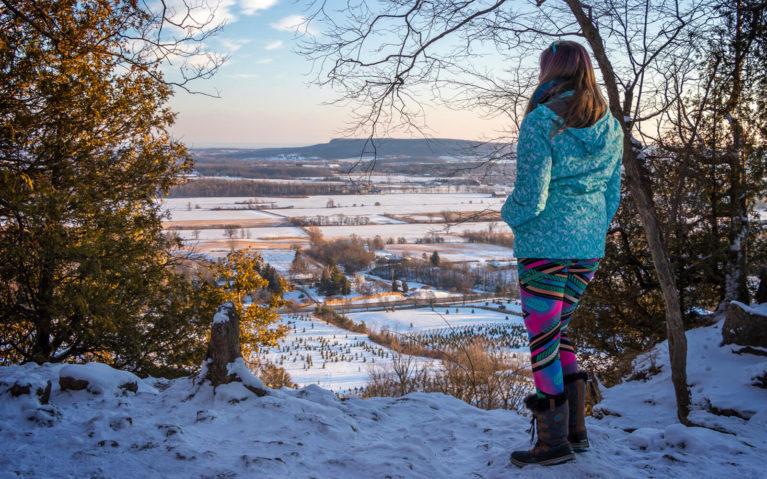
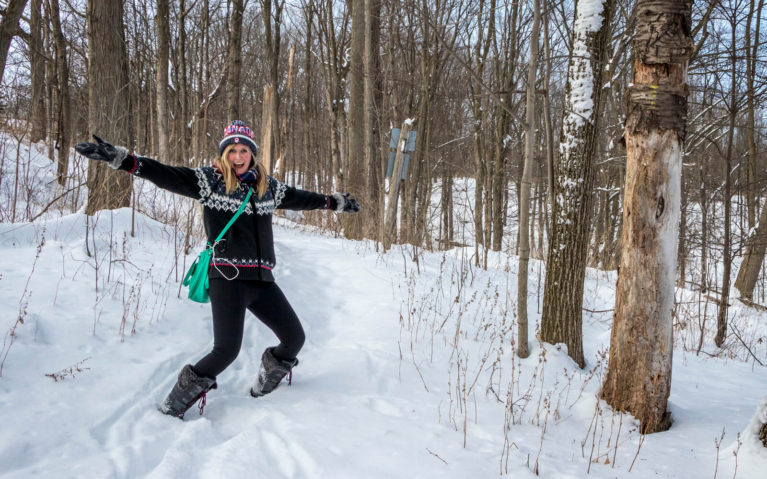

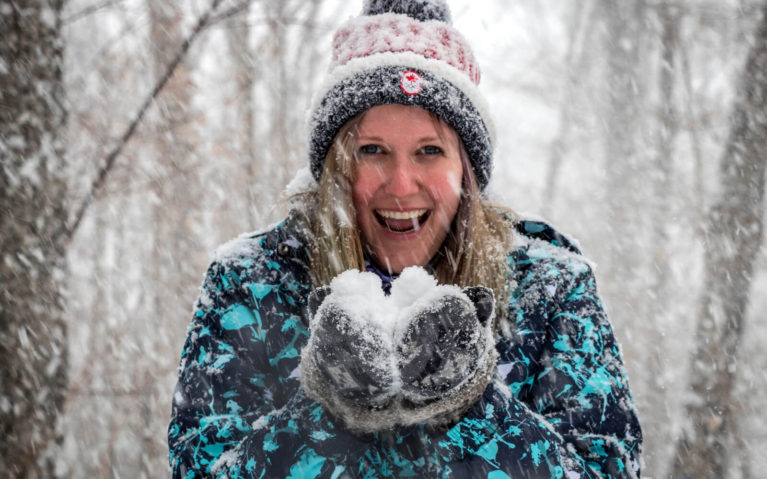

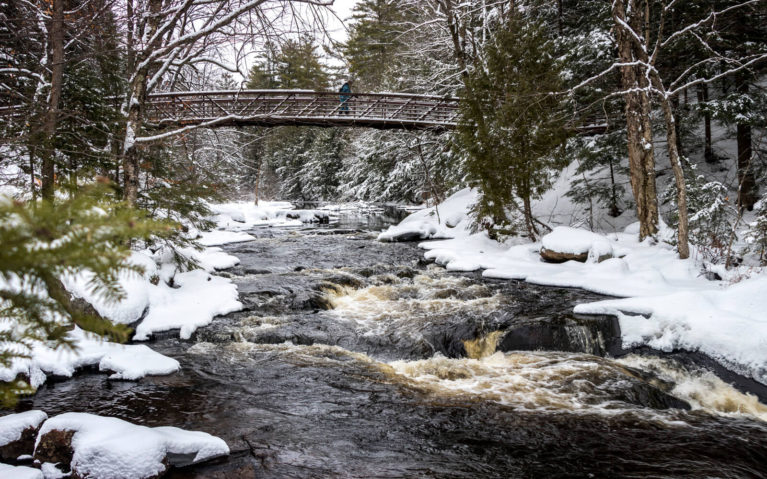
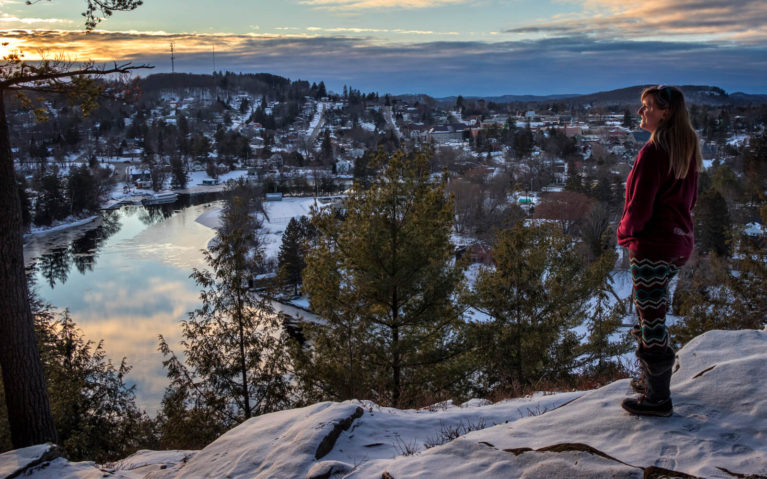


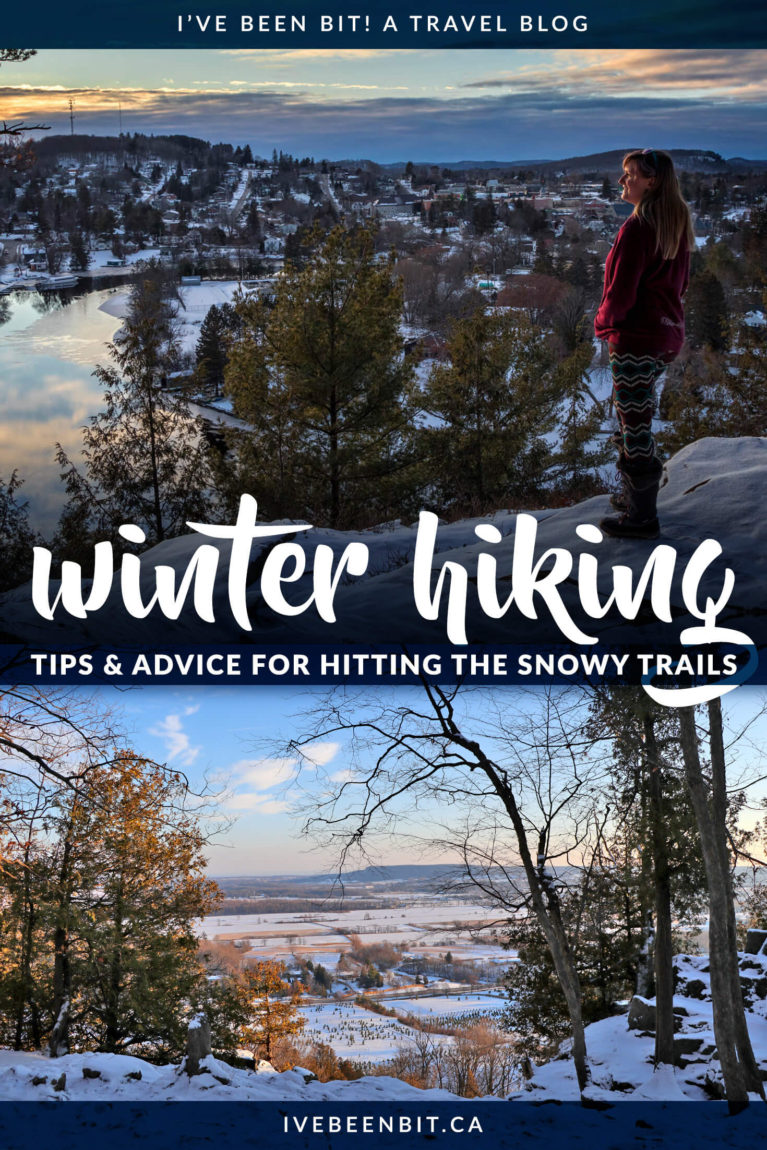







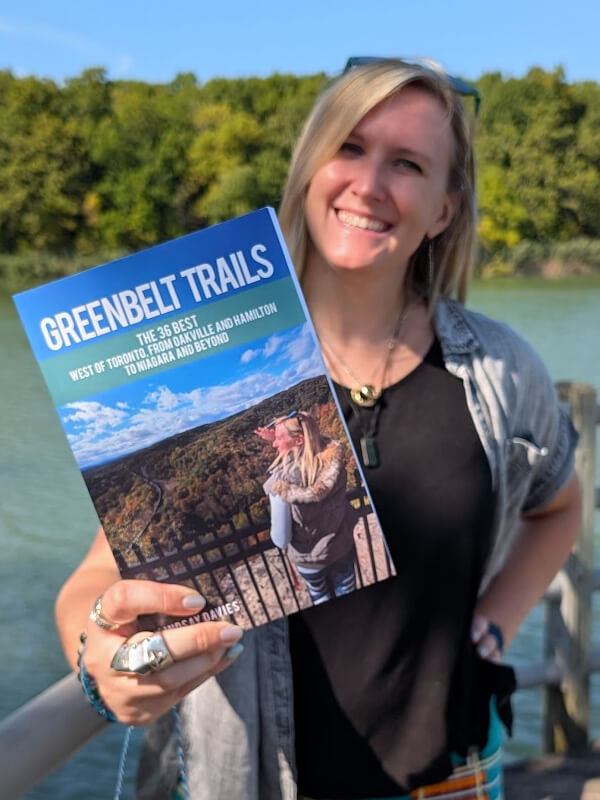


Share Your Thoughts